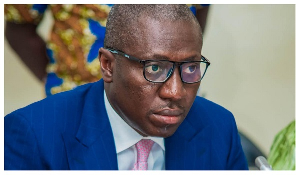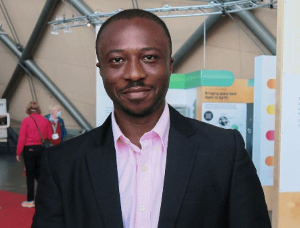Rankings of world universities have, in recent times, generated debate in the Ghanaian society. This is refreshing because it would enable all stakeholders in the educational sector to accord relevant input into our universities. Prospective applicants can also identify the right institutions that can meet their academic and career ambitions.
Indeed, rankings of universities are a tradition in the United States and other western countries. Rankings are conducted in those countries to assist parents and applicants etc make informed decisions regarding academic and career progressions. Apart from colleges and universities, institutions such as Hospitals, Research Laboratories etc are ranked. Even programmes of study are also assessed. In the United States, the US News and World Report and the Princeton Peer Review frequently asses colleges and universities using indicators such as average SAT scores, percentage of applicants admitted, faculty to student ratio, freshman retention etc. The Times Higher Education Supplement (THES) has been doing same for universities in the UK. The Shanghai Jiao, amongst other indicators, uses the number of Nobel Laureates associated with a particular college or university to do their rankings.There is no institution in Africa that has taken it upon itself to rank our universities. However some institutions, such as WEBOMETRICS, have emerged to rank Africa universities alongside the entire world universities. The 2006 WEBOMETRICS world universities rankings generated a lot of public debate especially when it was ascertained that our universities performed poorly even in the Africa rankings. Only two universities made it to the top 100 viz University of Ghana 42 and the Kwame Nkrumah University of Science and Technology ( KNUST) 64. Indeed there was a lot of media outcry about the academic performance of our universities when the rankings were released. The January 2007 world universities rankings by WEBOMETRICS are already out and in the Africa category, three of our universities made it in the top 100. University of Ghana placed 43, KNUST 63 and Ashesi University College 100. This, again, has started public debate as to the state of our university education system.
Admittedly, the current state of the country’s university education cannot be favourably compared with what pertained in the country three decades or thereabout due to several factors. However do the WEBOMETRICS rankings reflect the academic standings of Africa or World Universities such that our universities could perform that poorly? What methodology did the administrators of WEBOMETRICS employ such that African Virtual University (AVU), an online university concept within several universities across Africa including the KNUST, UG and UCC, could rank 33 in Africa ahead of our well-established universities? How could the Universities of Washington (11), Minnesota (12), Arizona (20), Maryland (24) and Indiana (26) rank better than Yale (37), Oxford (42), Princeton (50) Universities and Dartmouth College (107) in the world if the WEBOMETRIC rankings are academic rankings. It is important to know the methodology used before we comment on the rankings for without properly analyzing the ranking methodology, articles such as the one that appeared on www.ghanaweb.com on Tuesday June 12, 2007, captioned: “World Universities Rankings: Legon beat TECH’’, are interesting to read. Clearly, the writer and a host of commentators to that article did not analyze or simply read the ranking methodology before making those comments. Such attitude is a sacrilege in the intellectual community. It is very dangerous to our half literate society.
The renowned US NEWS and World Report ranks Princeton, 1, Harvard ,2, Stanford, 3, in its 2007 Top National Universities in the United States (www.usnews.com/ best colleges/ top national universities). Princeton placed 2nd with Harvard taking the top spot in the 2006 ranking. What methodology do the US NEWS and World Report use to asses United States Colleges and Universities?
According to the administrators of WEBOMETRICS (web appearance assessment), “ the WEBOMETRICS ranking is measuring the volume, visibility and impact of the web pages published by universities, with special emphasis on scientific output (referred papers, conference contributions, pre-prints, monographs, thesis, reports…) but also taking into account other materials (course work, seminars or workshops, documentation, digital libraries, databases, multimedia, personal pages…) and the general information on the institution, their departments, research groups or supporting services and the people working or attending courses. There is a direct target group for the ranking which is the university authorities. If the web performance of an institution is below the expected position according to their academic excellence, they should reconsider their web policy, promoting substantial increases in the volume and quality of their electronic publication”.
Wikipedia, the Free Encyclopedia has this to say:” WEBOMETRICS take into account both the volume of the web contents and the visibility and impact of this web publication according to the number of external inlinks they received. WEBOMETRICS indicators are provided to show the commitment of institutions to web publication. Thus, universities of high academic quality may be ranked lower than expected due to a restrained web publication policy”.
So we see that the rankings were after all not academic rankings but web appearance assessment. But should this delight us? Undoubtedly, our university education system is in a bad shape. It is not that the students or lecturers do not match international standards. Rather it is lack of basic facilities that are required for quality academic pursuit. There are top brains in our universities who match the very best brains elsewhere in the world. Almost all the students who participate in the National Science and Mathematics Quiz and other excellent students are pursuing programmes ranging from Engineering to Pharmacy and Medical and Pure Sciences. Of course some of these top brains are also pursuing Architecture, Planning, Social Sciences etc.
An international student from one of the neighbouring countries who is pursuing the Bachelor of Pharmacy programme said that majority of his course mates are very intelligent that he needed to work extra hard to match to their standard. This gentleman enrolled with aggregate 8. Maggie Muldoon, a Painting and Anthropology student from the University of California, Santa Barbara who was at KNUST for a year study abroad programme, said that the students at her department, Painting, are excellent. She said that the works they were producing match the standards at UC, Santa Barbara. However, she was concerned about the facilities students were using at the department.
But why is the university education system deteriorating if recent students are breaking and setting records set many many years ago. It is an undeniable fact that adequate facilities are an integral part of churning out top notch graduates. For without materials even Albert Einstein could not have been able to propound the special theory of relativity. How could he if he had not gotten access to read papers on Maxwell’s classical electromagnetic field theory and the Newtonian Mechanics. We must understand that our students and lecturers at our universities are not inferior to their counterparts at the so-called Ivy Leagues and other ‘prestigious’ universities around the world but rather the difference lies in the facilities students and faculty in those universities have at their disposal. Some of our products are lecturing and leading top researches in some of the universities. Some of our students who have enrolled in masters and doctoral degree programmes in those universities have excelled far better than some of their students and indeed have done wonderful works. Our products have contested and won top contracts where they also contested. Yes, everyday these developed countries siphon our locally trained professionals because according to them, they are well-trained.
It is important that we appreciate the fact that our universities can only match the standards elsewhere if only we resource them. The entire library system of Harvard University contains about fourteen million volumes aside online borrowing, University of British Columbia, Vancouver, Canada has about ten million volumes, the entire library system of Williams College, Massachusetts with an enrolment of 2000 students contains about one million volumes. There is no university in Ghana whose library system has about one million volumes. Last year a couple donated One hundred million United States dollars to the Endowment Fund of Harvard University. That amount totaled Two hundred million US dollars the couple has donated to the University making them the highest donor to Harvard. Harvard’s Endowment Fund has about two billion US dollars. In the 2002/2003 academic year, Bowdoin College, a liberal arts college in Maine, USA with enrolment of about 2000, spent Eighteen million US dollars in the form of aid to its students. The KNUST is struggling to raise about Thirty five million US dollars to implement its strategic plan, PLAN Y2K14.
The figures above indicate that we do not commit much resource in the training of Scientists and Technologists. It is interesting that Ghanaians want to obtain the same scientific and technological output like the US and other advance nations when the resources we commit to the training of our professionals are much below the expected level. In Singapore, a lot of monies are being channeled into educating scientists and engineers. No wonder the National University of Singapore (NUS) is among the finest Universities in the world. The MIT-Singapore Alliance is one of the greatest collaborations of our time. Interestingly, this university did not place well in the WEBOMETRICS rankings.
It is significant to observe that whereas individuals and corporate entities in the US commit much resource to the training of students, in Ghana people are comfortable in channeling huge sums of money into entertainment. So far no corporate entity has come out with an innovative TALENT HUNT Reality Show where students can compete with projects they have designed and win the same prizes given to the Sports Academy, Music and Dance Reality shows. Talent Hunts are rife in advance countries. Most of the current technologies have their roots from these TALENT HUNTS. I am not criticizing Areeba Sports Academy, Mentor, Dance Fever or Stars of the Future, please! All I am trying to put across is that we must accord science and technology the same attention we give to entertainment. In a country where students are not given monies to undertake their final year project works and other research activities, how do we expect to get world class outputs?
Another important thing is that the media in Ghana do not get closer to our universities. There are a lot of interesting things taking place in our universities but the media do not report them. No wonder Professor Josephus Anamuah-Mensah, the Vice Chancellor of the University of Education, Winneba, had to complain about this attitude of the media. The media, for a long time, has been concentrating their reportage on activities in Accra. With issues about university education, the media concentrates on Legon because, again, they are parochial in their reportage. There is the need to get to other universities to learn what is taking place there.
The KNUST would not struggle to compare itself with any tertiary institution in Ghana. It shall continue to be the place where the very best students in Ghana find themselves studying in a competitive but relaxed manner. It shall always be the leader in university education. For here, out of scanty resources, several innovations in university education in Africa are made yearly. Given the competitiveness of admissions, the quality of students and lecturers, the contributions of graduates in all sectors of the economy and programmes being mounted yearly, the KNUST is well-positioned to lead the country to upper middle income level if adequate facilities are provided. Having educated people like the legendary Dr Thomas Mensah, one of the finest engineers in the world with 7 US and World Patents and a consultant to NASA, Professor Fred Boadu, one of the finest Geophysicists in the world, Mr Kofi Annan, the first black UN Secretary General and indeed the finest Secretary General in the history of that institution and many more, the KNUST is, undoubtedly, one of the finest universities in the world and certainly the best technical university in Africa.















